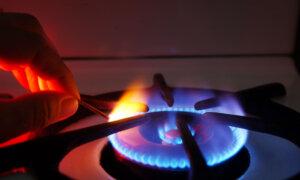With the biggest rate jump in its history amounting to new income of $13.8 billion recently approved and slated to take effect in January, the largest utility company in California is now requesting another increase of more than $2 billion.
If approved by regulators, 16 million Pacific Gas & Electric—better known as PG&E—customers’ bills would spike again in March.
One state lawmaker said the higher prices would negatively impact Californians.
“A second proposed rate hike, just a few weeks after their initial request to raise prices was approved by the California Public Utilities Commission, is utterly unacceptable,” Assemblyman Carlos Villapudua (D-Stockton) told The Epoch Times in an email Dec. 13. “California ratepayers, especially seniors and those on a fixed income, have been struggling over recent years to meet the rising cost of living here.”
He suggested more needs to be done to protect the state’s consumers given the utility’s history of errors, some of which were later determined to be responsible for causing deadly wildfires in recent years.
“PG&E cannot continue flipping the bill onto unwilling consumers to make up for their own past mistakes,” Mr. Villapudua said. “Our constituencies clearly need better protections from these unreasonable rate hikes.”
A spokesperson for the utility company said the request is needed to cover costs it had not expected due to “climate change” and to help make the electric system safer.
“To achieve those goals, we sometimes have to incur exceptional costs to reduce wildfire risk and/or respond to emergency events like wildfires and storms, which exceed what we’ve previously been authorized to spend in rate proceedings.”
Additionally, she said the increase would cover the utility’s costs for wildfire mitigation, like clearing trees and brush on private property throughout the state, and is not related to previous damages caused by the company. Thirty wildfires have been blamed on the utility since 2017, which, in total, have destroyed about 23,000 homes and killed more than 100 people, according to CalFire statistics.
“PG&E is confident that its costs are reasonably sought in its application,” Ms. Robison said. “These costs do not include instances where PG&E equipment was found to have caused a fire.”
One group said spending decisions made by the utility in recent years are now negatively impacting ratepayers—with customers facing some of the highest prices for power in the country.
“PG&E’s decision to significantly overspend on wildfire mitigation and in other accounts shouldn’t be borne by customers whose rates are already among the highest in the nation,” The Utility Reform Network—a California based public advocacy group—posted Dec. 14 on X, formerly known as Twitter.
Several customers took to social media to express their dissatisfaction with the high price of power and the utility’s new request.
“I already can’t afford my [PG&E] bill this month,” one customer posted Dec. 10 on X. “How will I do it with another rate increase?”
She posted a copy of her most recent monthly power bill, showing more than $330 in charges for her 600 square foot apartment.
The utility company’s rates rank among the highest in the state, only topped by San Diego Gas and Electric, based on average residential pricing, according to the Sacramento Municipal Utility District.
Some point to the executive salaries paid by the utility as contributing to prices paid by consumers. The utility’s CEO, Patricia Poppe, earned more than $51 million in compensation during 2021, according to the utility’s financial statements.
As a publicly traded company, PG&E executives have a fiduciary duty to shareholders to maximize profit.
Critics say such is a disadvantage to ratepayers, as the lack of competition allows such utilities to monopolize markets.
The state’s public utilities commission is tasked with using its regulatory authority to balance the needs of the companies with consumers, with commissioners appointed by the governor.
In its November decision, the commission considered a rate increase request of 26 percent from the utility company, ultimately approving a 13 percent jump.
Now the group will entertain the newly filed request, with a decision expected in the coming months.







